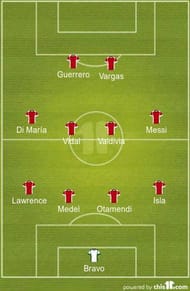It was a memorable Copa América in Chile where the hosts ended their 99-year wait to claim their first-ever international trophy. Meanwhile for runners-up Argentina, their 22 years without a senior title continues.It was a tournament defined by positive football, shocks, and some great goals, a serious step up on 2011’s Copa América where defences ruled. Chile and Argentina were the two most positive teams in the tournament and played out a tense final that was cat-and-mouse at times. But who were the standout players in the cup? Keep reading on to find out our selection of XI stars to make up the team of the competition –
#1 Goalkeeper: Claudio Bravo (Chile)
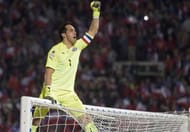
The winning captain and the winner of the Golden Glove award, there was little doubt that the Barcelona man was the best keeper on show here. Keeping four clean sheets in six games was only part of it; he led from the back, sweeping up behind his defence to always offer a passing outlet should his defenders feel the pressure; and the choice and crispness of his passing was in keeping with his side’s philosophy of moving the ball quickly.
A thoroughly modern goalkeeper, having just enjoyed an exceptional first season at Barcelona, he stood head and shoulders above the competition here. The one aberration was the three goals conceded against Mexico in the group stage draw - more the fault of the defence, truth be told - but other than that he was imperious and it’s fitting that his shootout save from Éver Banega proved decisive.
#2 Right-back: Mauricio Isla (Chile)
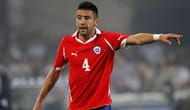
It’s a recurring theme amongst Chile’s stars, but there is a real sense that they over-perform when donning the national shirt. Isla is one of many examples of this phenomenon.
Signed by then Juventus boss Antonio Conte in 2012 as a right wing-back after excelling at Udinese, he found it difficult to dislodge the incumbent Stephan Lichtsteiner for the Bianconeri, and spent last season on loan at relegated Queens Park Rangers where his form was up and down.
This wasn’t aided by Harry Redknapp’s decision to abandon his initial three-man defensive system - with an eye to which he was signed - and the team as a whole started performing poorly. At this Copa América, he was back to his very best, patrolling the entire flank indefatigably. He also chipped in with the only goal in their tense quarter-final encounter with a dogged Uruguay side.
#3 Centre-defence: Gary Medel (Chile)
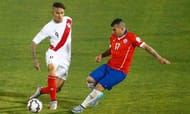
More known for patrolling the middle of the park during spells at Sevilla, Cardiff City, and currently Internazionale since arriving in Europe from Boca Juniors, the combative Medel largely featured in defence in this tournament, where manager Jorge Sampaoli carries on the policy of his mentor Marcelo Bielsa of converting central midfielders into centre-backs.
This is crucial to their philosophy of ball circulation, and although in Spain and Italy, Medel has been lauded for his tenacious nature, his passing qualities were instantly recognised in the Premier League.
Medel’s history as a midfielder allowed Chile to build from the back, but where he really caught the eye - and cemented his place in this XI - was with his display in the final. The switch to three at the back allowed him to shadow Lionel Messi when he dropped deep and Medel effectively muzzled the Argentine.
#4 Centre-back: Nicolas Otamendi (Argentina)
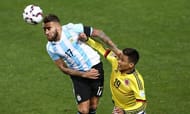
It’s a mystery as to how the former Porto man has taken so long to establish himself at the heart of the Argentina defence. Being played out of position at right-back by Diego Maradona in the 2010 World Cup appeared to make a hit on his reputation and for several years he was completely overlooked by successive coaches.
A move to Valencia saw him cement his position as one of the top central defenders in Europe, and a move to Real Madrid appears on the cards. Quite simply, he was the standout central defender in this competition, where he marshalled an occasionally shaky Argentina backline to great effect.
After being overlooked for so long, there is a sense now that his time has come, and he should be able to nail down his position as leader of the defence going forward to Russia 2018
#5 Left-back: Kemar Lawrence (Jamaica)
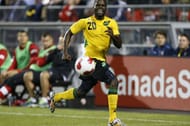
The New York Red Bulls man was one of the revelations of the group stages, forming a key component for a surprisingly obdurate Jamaica side who were never embarrassed despite being rank outsiders.
Drawn in a tough group, the Reggae Boyz were considered to be little more than cannon fodder ahead of the tournament but performed admirably in going down in their three group encounters 1-0. This was largely down to their excellent defensive organisation and while that was a real team effort, Lawrence’s qualities on the left really shone through.
Disciplined in defence, he also found time to make attacking raids, offering his side an out-ball when under pressure. He would have been an unknown quantity for many before this competition but is sure to have caught the eye of visiting European scouts with his performances.
#6 Right midfield: Lionel Messi (Argentina)
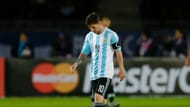
A year on from the World Cup, the Barcelona man suffered yet more final heartbreak with the national side as they came up just short yet again. Messi endured a frustrating final and struggled to get into the game after Ángel Di María limped off after half an hour.
He touched the ball just 63 times in the 90 minutes, his lowest total for tournament, as his side struggled to feed him the ball. But that shouldn’t detract from what was a memorable Copa for the four-time Ballon d’Or winner.
Put simply he was everywhere, and while he only scored one from the spot, he was Argentina’s supply line throughout. The performance against Paraguay in the semi-final was one of his best ever, as he directly assisted three goals and created the other three as La Albiceleste annihilated a side who had drawn with them in group before dumping out Brazil.
#7 Central-midfield: Arturo Vidal (Chile)
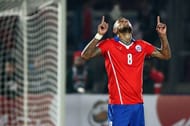
Of course, many will question whether Arturo Vidal should have been allowed to play a further part in this competition after wrecking his car while under the influence of alcohol. The criminal case is ongoing, and manager Jorge Sampaoli has excluded players from previous Chile squads for far less grievous offences.
But his faith was repaid by a string of excellent performances. As for Juventus, Vidal is a real driving force in midfield. Crisp in the tackle, Vidal also found the time to pop up in the opposition area to provide an impressive three goals, one off the highest total in the competition.
He was off the pace at last year’s World Cup after coming back from a serious injury but here he was back to his best, crunching into tackles, moving the ball intelligently and always ready to break the line with his attacking runs. A force of nature.
#8 Central midfield: Jorge Valdivia (Chile)
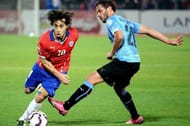
A player not well known to those whose focus lies on European football, the former Palmeiras mainstay has recently moved to the United Arab Emirates after excelling in Brazilian domestic football. Having caught the eye at the previous Copa América in 2011, he went one better here and was the most influential playmaker of the tournament.
Of course, no Bielsa-influenced side can accommodate the old-fashioned, languid playmakers of yore and here Valdivia’s work-rate was admirable. He was always ready to press his man, snap into the tackle while also having the presence of mind to thread delicious defence-splitting passes to Chile’s mobile front-line.
It’s debatable as to whether, at 31 now, he’ll be around for the next World Cup but he should remain a key figure for the side going into next year’s Centenary Copa América in the United States.
#9 Left midfield: Angel Di Maria (Argentina)
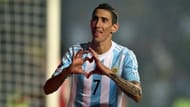
It appears the Manchester United man has no luck with finals. His absence through injury robbed Argentina of a vital outlet against Germany last year, and in this competition he lasted thirty minutes before trudging off with a pulled hamstring.
it was a pity as his lively form throughout the tournament continued in the opening part of the final and his team looked greatly diminished by his absence. After enduring a frustrating first campaign in English football, he was back to his very best in Chile.
Right from the off in the opening match in Paraguay his direct running was a joy to behold, and he offered Argentina an extra dimension throughout. Like his team, he reached his zenith in their semi-final against the same opposition where he netted twice and assisted another.
After a rough year, there was plenty on show to here to indicate that Louis Van Gaal should allow the ex-Madrid man another chance.
#10 Forward: Eduardo Vargas (Chile)
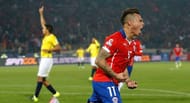
Another player whos flattered to deceive at club level in Europe but is another beast in the national team shirt, Eduardo Vargas enjoyed a superb tournament where he tied Perus Paolo Guerrero for top-scorer and scored the goal of the tournament in the semi-final against Peru.
Vargas came up through the ranks at the excellent Universidad de Chile side where his manager Jorge Sampaoli made his name earlier this decade, but has failed to spark since a big-money move to Napoli in 2012 and also disappointed in loan spells at Valencia and QPR.
There is little doubt that the boss has a bond with the forward and knows how to get the best out of him, given he impressed at the World Cup and has scored 22 goals in 47 international appearances. The question is whether another European club will gamble on getting the best out of him.
#11 Forward: Paolo Guerrero (Peru)
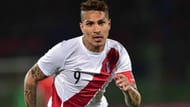
Little was expected of Peru going into this tournament given their poor showing in World Cup qualifying, and dreadful record on the road in recent decades, but they proved to be the surprise team of the tournament.
Several of their players deserve an honorary welcome, but there’s little doubt that the ex-Bayern and Hamburg striker Paolo Guerrero was the pick of the bunch. He finished as joint top scorer with four goals, but there is so much more to forward than that.
He can hold the ball up, link the play with his side’s pacy wingers and yes, of course, he knows where the goal is. The question is if - like many of his side’s leading lights, he’s now the wrong age of thirty - Peru can build on this showing in the upcoming World Cup qualifiers. But this was certainly a memorable Copa for Guerrero and Peru as they finished third.
#12 Manager: Jorge Sampaoli (Chile)
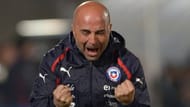
It was a tournament dominated by Argentine managers and honourable mentions must go out to Sampaoli’s compatriots Ricardo Gareca and Ramón Diaz, for their work with Peru and Paraguay respectively.
But it would be churlish to look beyond the former Universidad de Chile man in selecting the standout coach of this competition. After seeing his side ship three goals against a second string Mexican side in the group stages, he tightened up the defence to great effect.
Arturo Vidal’s antics and Gonzalo Jara’s misdemeanours could have derailed matters for the hosts, but he fostered a sense of unity of purpose amongst a side under intolerable pressure to claim the Copa for the first time after 99 years of failure on home turf. His achievements in the last few years will have European clubs sniffing about, but the Argentine seems wedded to this project.
The team will play in a 4-4-2 formation. Here is how the team will line-up –
